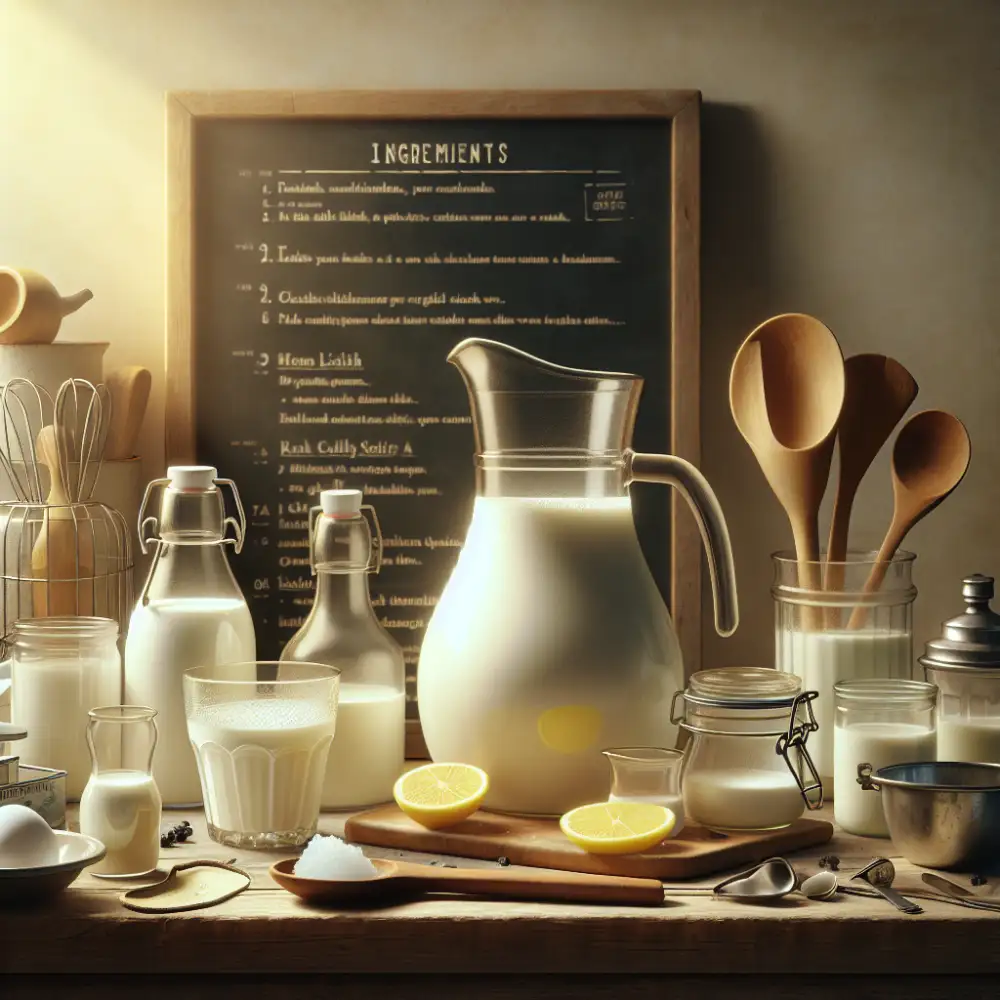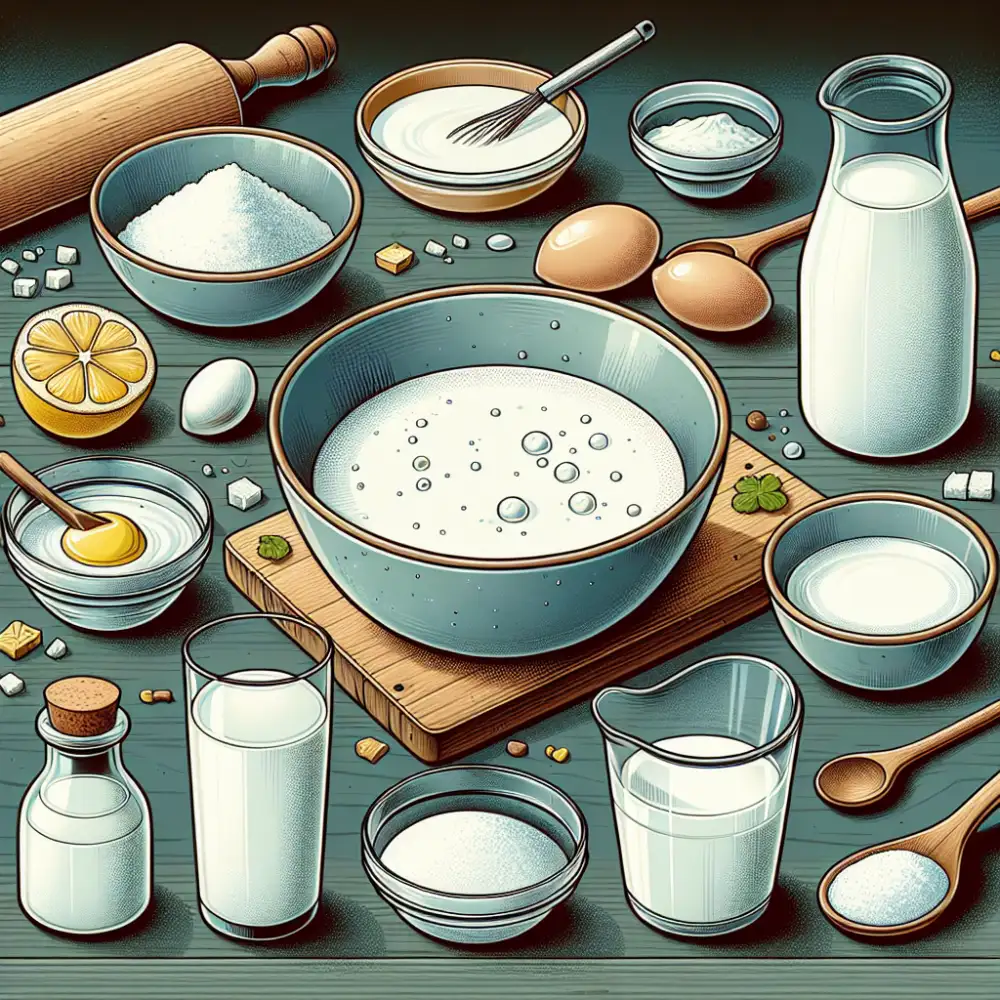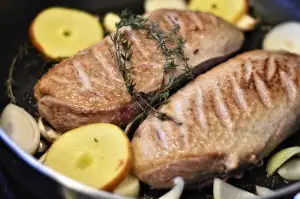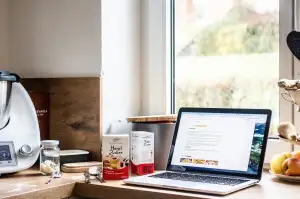Whisk Up Homemade Buttermilk: A Foolproof Recipe for Creamy Delight

- Explanation of the traditional method of making buttermilk using leftover cream
- Step-by-step instructions for making buttermilk at home using store-bought milk and vinegar or lemon juice
- Tips for achieving the desired consistency and flavor of homemade buttermilk
- Alternative methods for making buttermilk using yogurt or sour cream
- Suggestions for using buttermilk in various recipes, such as pancakes, biscuits, and salad dressings
- Health benefits of consuming buttermilk, including its probiotic properties and calcium content
Buttermilk, a tangy and creamy liquid, is a versatile ingredient that adds a delightful flavor and texture to various dishes. Contrary to its name, buttermilk is not made from butter but rather from the liquid left behind after churning butter. It has been used for centuries in cooking and baking due to its unique properties. Buttermilk acts as a tenderizer in baked goods, resulting in moist and fluffy cakes, biscuits, and pancakes. Its acidic nature also helps activate leavening agents like baking soda, making it an essential component in many recipes. Whether you're whipping up a batch of fluffy pancakes or creating a tangy salad dressing, buttermilk is sure to enhance your culinary creations with its distinct taste and creamy texture.
Explanation of the traditional method of making buttermilk using leftover cream
Traditionally, buttermilk was made by churning cream into butter. After the butter was separated, the remaining liquid was known as buttermilk. This method utilized leftover cream from the butter-making process and resulted in a tangy and creamy buttermilk. The natural fermentation of the cream gave it its distinctive flavor and texture. However, this traditional method is not commonly used today due to the availability of store-bought buttermilk and alternative homemade methods using milk and acidic ingredients.
Step-by-step instructions for making buttermilk at home using store-bought milk and vinegar or lemon juice
To make homemade buttermilk using store-bought milk and vinegar or lemon juice, follow these simple steps:
- Start with 1 cup of whole milk. It's important to use whole milk for its higher fat content, which will result in a creamier buttermilk.
- Measure out 1 tablespoon of white vinegar or fresh lemon juice. Both vinegar and lemon juice work as acidifiers to curdle the milk and create the tangy flavor of buttermilk.
- Pour the vinegar or lemon juice into a measuring cup and add enough milk to reach the 1-cup mark. Stir gently to combine.
- Let the mixture sit at room temperature for about 10 minutes. During this time, the acid will react with the proteins in the milk, causing it to curdle and thicken slightly.
- After 10 minutes, give the mixture a good stir. You'll notice that it has thickened slightly and resembles traditional buttermilk.
- Your homemade buttermilk is now ready to use in your favorite recipes! If you prefer a thicker consistency, you can let it sit for a bit longer before using it.
By following these easy steps, you can enjoy the creamy delight of homemade buttermilk without having to rely on store-bought options.
Tips for achieving the desired consistency and flavor of homemade buttermilk
To achieve the desired consistency and flavor of homemade buttermilk, there are a few tips to keep in mind. Firstly, it's important to use whole milk for the best results. The higher fat content will contribute to a richer and creamier buttermilk. Secondly, when adding vinegar or lemon juice to the milk, make sure to mix it well and let it sit for at least 10 minutes before using. This allows the acid to react with the milk and create that tangy flavor characteristic of buttermilk. Lastly, if you prefer a thicker buttermilk, you can add a tablespoon of heavy cream or sour cream to the mixture. Adjusting these factors will help you achieve a homemade buttermilk that is both creamy and flavorful.

Alternative methods for making buttermilk using yogurt or sour cream
Alternative methods for making buttermilk include using yogurt or sour cream. Both of these dairy products have the acidic properties necessary to create a similar tangy flavor and creamy consistency. To make buttermilk with yogurt, simply mix one cup of plain yogurt with one cup of milk until well combined. This mixture can be used as a substitute for buttermilk in recipes.
Another option is to use sour cream to make buttermilk. Mix one cup of sour cream with enough milk to achieve the desired consistency. The ratio can vary depending on personal preference, but a good starting point is equal parts sour cream and milk.
Both yogurt and sour cream provide a rich and tangy flavor that adds depth to dishes like pancakes, biscuits, and salad dressings. Experimenting with these alternative methods can yield delicious results while still maintaining the essence of traditional buttermilk.
| Method | Ingredients | Time | Pros | Cons |
|---|---|---|---|---|
| Traditional Culturing | Milk + Buttermilk culture (or a small amount of store-bought buttermilk) | 12-24 hours | Thickest consistency, most tangy flavor | Requires advance planning |
| Lemon Juice/Vinegar Method | Milk + Lemon juice or white vinegar | 5-10 minutes | Quick and easy, most accessible ingredients | Slightly thinner consistency, less tangy flavor |
Suggestions for using buttermilk in various recipes, such as pancakes, biscuits, and salad dressings
Buttermilk is a versatile ingredient that can enhance the flavor and texture of various recipes. Here are some delicious suggestions for using buttermilk in your culinary creations:

1. Pancakes: Add buttermilk to your pancake batter for light and fluffy pancakes with a tangy twist. The acidity of buttermilk helps activate baking powder, resulting in extra-fluffy pancakes.
2. Biscuits: Buttermilk is the secret to tender and flaky biscuits. Replace regular milk with buttermilk in your biscuit recipe for a rich and tangy flavor that pairs perfectly with butter or jam.
3. Salad dressings: Create creamy and tangy salad dressings by substituting buttermilk for regular milk or yogurt. Combine buttermilk with herbs, garlic, and lemon juice for a refreshing dressing that complements any salad.
4. Marinated chicken: Use buttermilk as a marinade for chicken to tenderize the meat and infuse it with flavor. The acidity in buttermilk helps break down proteins, resulting in juicy and flavorful chicken.
5. Muffins and cakes: Incorporate buttermilk into your muffin or cake batter to add moisture and tenderness. The acidity of buttermilk also reacts with baking soda, creating a light texture in baked goods.
Remember to adjust the other ingredients accordingly when using buttermilk in recipes, as it may affect the overall balance of flavors. Experiment with these suggestions to elevate your dishes with the creamy delight of homemade buttermilk!
Health benefits of consuming buttermilk, including its probiotic properties and calcium content
Buttermilk not only adds a creamy tang to recipes, but it also offers numerous health benefits. One of the key advantages of consuming buttermilk is its probiotic properties. Probiotics are live bacteria and yeasts that are beneficial for our digestive system. They help maintain a healthy balance of gut flora, aid in digestion, and boost our immune system.
Additionally, buttermilk is a good source of calcium, which is essential for strong bones and teeth. Calcium also plays a vital role in muscle function and nerve transmission. Incorporating buttermilk into your diet can help meet your daily calcium requirements.
It's important to note that the health benefits of buttermilk may vary depending on the brand or homemade recipe used. Opting for low-fat or non-fat versions can reduce the calorie content while still providing these beneficial properties. So go ahead and enjoy the creamy delight of homemade buttermilk while reaping its health rewards!
In conclusion, homemade buttermilk is a versatile and delicious ingredient that can elevate your culinary creations. By following the simple steps outlined in this article, you can easily make your own buttermilk at home using store-bought milk and vinegar or lemon juice. Don't be afraid to experiment with different methods and ratios to achieve the desired consistency and flavor. Whether you use it in pancakes, biscuits, salad dressings, or other recipes, buttermilk adds a creamy tanginess that enhances the overall taste. Additionally, consuming buttermilk provides health benefits such as probiotics for gut health and calcium for strong bones. So why not give homemade buttermilk a try? Get creative in the kitchen and enjoy the creamy delight of this culinary gem!

Published: 03. 02. 2024
Category: Recipes



